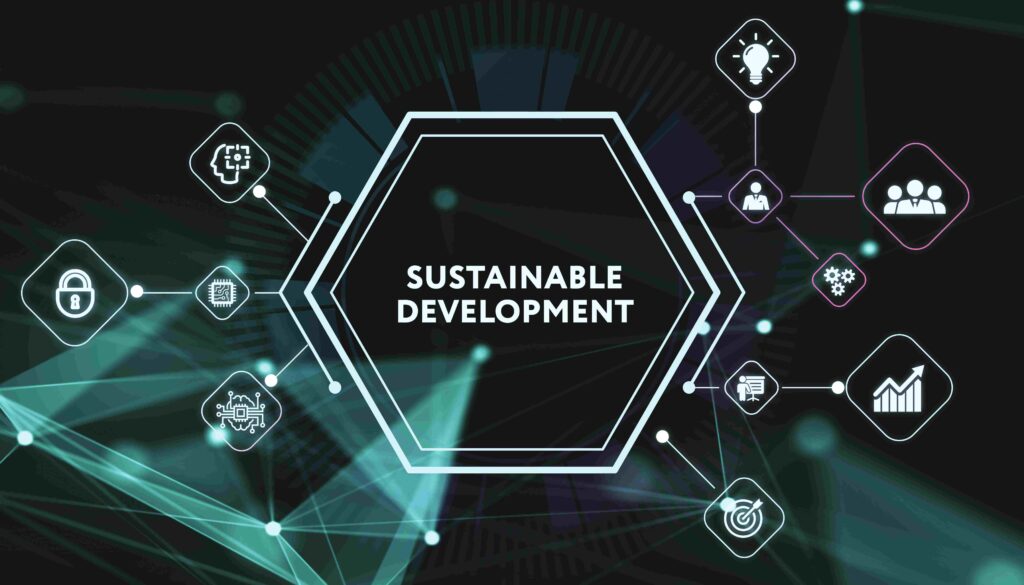Triumph of Transformation with Sustainability

The cleaning industry is undergoing a significant transformation, driven by automation and sustainability. As mechanisation takes hold, cleaning staff are empowered to move into skilled labour roles, and businesses can improve cleaning consistency. The shift from labour-hour pricing to outcome-based pricing will reshape how cleaning services are priced, focusing more on the results rather than the headcount. The future of cleaning lies in mechanisation, smarter technology, and a more sustainable approach that benefits businesses, workers, and the environment alike.
Changing society’s perception of frontline cleaning staff is a crucial step toward achieving multiple objectives in the cleaning and facility management industry. Traditionally, cleaning work has been seen as a low-skilled, repetitive job. However, by training cleaning staff to operate advanced machinery, we can elevate their roles to skilled positions, which in turn improves both job satisfaction and overall efficiency. This shift results in faster, more consistent cleaning, reduced labour turnover, and increased customer satisfaction, all contributing to long-term cost savings.
Mechanisation allows a smaller, better-equipped workforce to cover larger areas in less time — whether in offices, hospitals, warehouses, or public spaces. The focus is not just on reducing labour but on empowering staff with the right tools to complete tasks more effectively and efficiently. This is a win-win for both cleaning personnel and the organisations they serve.
Workers’ Training
The introduction of automation in cleaning does not lead to job losses; rather, it empowers workers by upgrading their roles from manual labourers to skilled technicians. By training cleaning staff to operate specialised machines, their skills are enhanced, and their roles become more valuable. These workers move into higher salary brackets, experience more job stability, and are less likely to leave their positions, which significantly reduces turnover.
Furthermore, mechanisation helps to improve job satisfaction. Cleaning staff, once frustrated by the repetitive nature of manual work, now have the opportunity to learn new skills, operate advanced machines, and take pride in their work. This shift enhances both productivity and morale. As a result, a more motivated and highly skilled workforce leads to better resource management — whether in terms of time, energy consumption, or the use of cleaning chemicals.
Automation and Mechanisation
Automation in the cleaning industry is an inevitability that offers a number of advantages. By adopting mechanisation, businesses can reduce their reliance on human labour while increasing the consistency and efficiency of cleaning operations. Automation also drives higher wages by making cleaning a more skilled profession, which in turn attracts a more talented workforce.
As mechanisation takes hold, the focus will shift from labour hours to the actual results of cleaning. The days of pricing cleaning services based on the number of workers or labour hours are numbered. Instead, the industry is moving toward an outcome-based pricing model where customers pay for the result — clean, well-maintained spaces — rather than the input of time and labour.
Cleaning Costs and Customer Expectations
One of the major hurdles the cleaning industry faces is shifting how cleaning services are priced. Traditionally, cleaning contracts have been based on labour hours, with costs calculated by the number of workers and the amount of time spent cleaning. As mechanisation takes over, this pricing model will need to evolve. Instead of negotiating based on the number of workers or the hours worked, customers will begin to pay for the outcome: the quality of cleanliness delivered.
Moreover, as the industry embraces automation, the expectation is that businesses will see a return on their investment. Automated systems are more efficient, use fewer resources, and provide more consistent results. The challenge for service providers will be to show customers the long-term value of automation — demonstrating that investing in mechanised cleaning leads to both financial savings and improved cleanliness over time.
Balancing People, Environment, and Responsibility
Sustainability is at the heart of the cleaning industry’s evolution. Mechanisation and automation are not only about improving efficiency but also about minimising environmental impact. Cleaning operations consume large amounts of water, electricity, and chemicals, and automation can help reduce this consumption. Machines designed to optimise resource usage — whether it is water, chemicals, or energy — help the industry reduce its ecological footprint while still delivering high-quality results.
The key to sustainability is also in the responsible use of chemicals. Many cleaning chemicals, if not used properly, can be harmful to both the environment and the cleaning staff. By monitoring chemical usage, ensuring proper training, and using eco-friendly alternatives, the cleaning industry can improve its environmental reputation and contribute to a more sustainable future.
Improving Cleaning Quality
The challenge remains for businesses to shift the perception of cleaning from a necessary but undervalued task to an essential service that adds value. While some customers may struggle to see the financial return from cleaning services, the industry is working to prove that automated and mechanised cleaning leads to higher quality outcomes.
Ultimately, customers should focus less on the number of people cleaning their space and more on the results. Instead of negotiating based on labour costs or the number of workers, businesses should look to the quality of the cleaning service and the results it delivers. The ultimate goal is a clean, well-maintained environment, and the industry is transitioning to a model where cleaning services are priced based on the results they provide, rather than the input costs.
Challenges and Investments
While the move toward mechanisation offers clear benefits, it requires a financial commitment. For businesses to adopt automation, the investment must be financially viable. Labour costs, training, and equipment maintenance must all be factored into the decision to switch to mechanised systems. However, with the right investment, businesses can achieve significant long-term savings, both in terms of operational costs and improved cleaning outcomes.
When implementing automation, it is also essential to choose the right equipment for the job. Over-spending on equipment may lead to unrealistic expectations, while under-spending can result in poor outcomes. Ensuring that the equipment is properly sized for the application site is crucial. Additionally, regular training and maintenance are necessary to keep equipment running efficiently and to maximise its lifespan.
The article draws inference from the President & CEO, Tennant Company, Dave Huml’s, keynote address at the DigiFM Conference held during the Clean India Show, sharing the practices implemented by the global player.
 CIJConnect Bot-enabled WhatsApp
CIJConnect Bot-enabled WhatsApp









